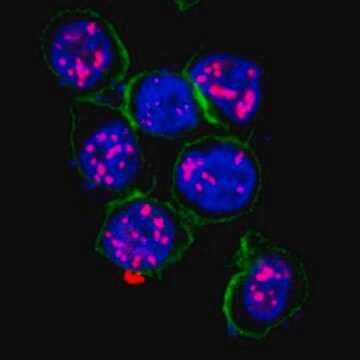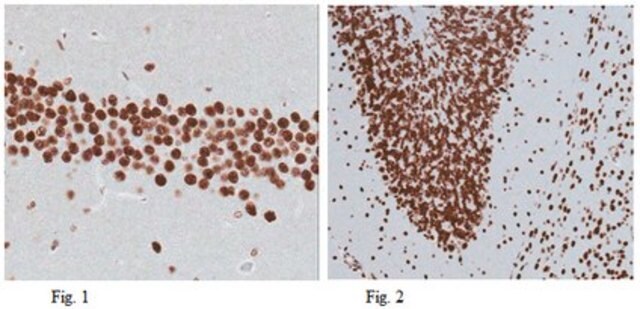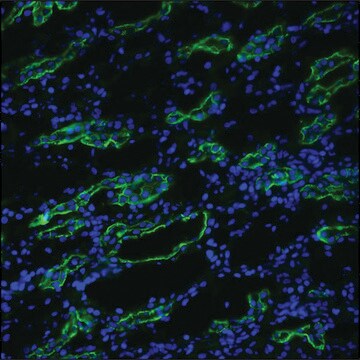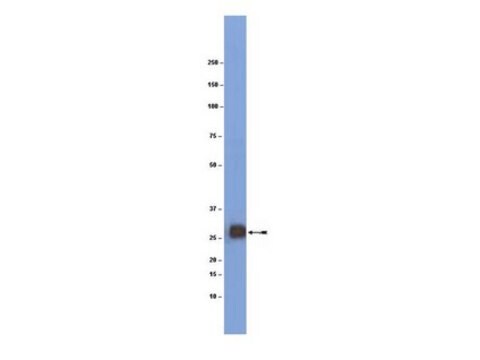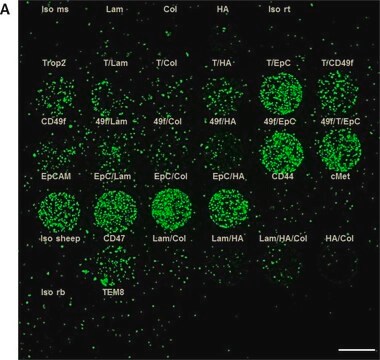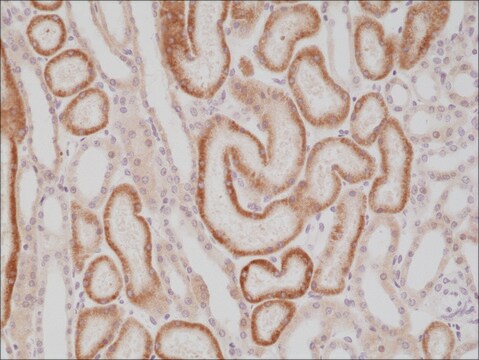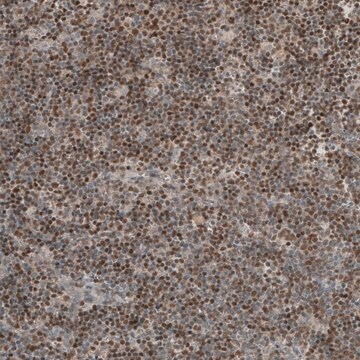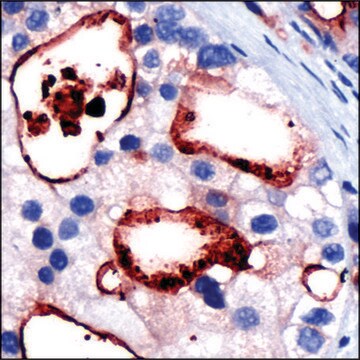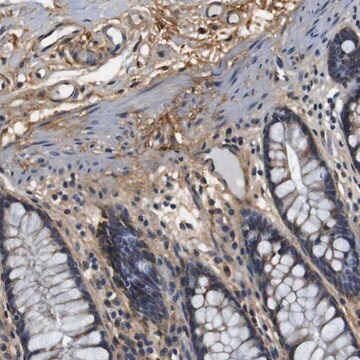MABE1935
Anti-Sox-11 Antibody, clone SOX11-C1
About This Item
Polecane produkty
pochodzenie biologiczne
mouse
Poziom jakości
białko sprzężone
unconjugated
forma przeciwciała
purified antibody
rodzaj przeciwciała
primary antibodies
klon
SOX11-C1, monoclonal
masa cząsteczkowa
calculated mol wt 46.68 kDa
oczyszczone przez
using protein G
reaktywność gatunkowa
human
opakowanie
antibody small pack of 100 μg
metody
flow cytometry: suitable
immunocytochemistry: suitable
immunohistochemistry (formalin-fixed, paraffin-embedded sections): suitable
western blot: suitable
izotyp
IgG1κ
sekwencja epitopowa
Internal
numer dostępu Protein ID
numer dostępu UniProt
Warunki transportu
2-8°C
docelowa modyfikacja potranslacyjna
unmodified
Powiązane kategorie
Opis ogólny
Specyficzność
Immunogen
Zastosowanie
Evaluated by Immunocytochemistry in SH-SY5Y cells.
Immunocytochemistry Analysis: A 1:250 dilution of this antibody detected Sox-11 in SH-SY5Y cells.
Tested Applications
Flow Cytometry Analysis: A representative lot detected Sox-11 in Flow Cytometry applications (Nordstrom, L., et al. (2012). BMC Cancer.;12:269; Lu, T.X., et al. (2013). Leuk. Res. 37(11):1412-9).
Western Blotting Analysis: A representative lot detected Sox-11 in Western Blotting applications (Nordstrom, L., et al. (2012). BMC Cancer. 12:269).
Immunocytochemistry Analysis: A representative lot detected Sox-11 in Immunocytochemistry applications (Nordstrom, L., et al. (2012). BMC Cancer. 12:269).
Immunohistochemistry (Paraffin) Analysis: A representative lot detected Sox-11 in Immunohistochemistry applications (Nordstrom, L., et al. (2012). BMC Cancer. 12:269; Nordstrom, L., et al. (2014). Br. J. Haematol. 166(1):98-108; Lu, T.X., et al. (2013). Leuk Res. 37(11):1412-9).
Note: Actual optimal working dilutions must be determined by end user as specimens, and experimental conditions may vary with the end user
Postać fizyczna
Przechowywanie i stabilność
Inne uwagi
Oświadczenie o zrzeczeniu się odpowiedzialności
Nie możesz znaleźć właściwego produktu?
Wypróbuj nasz Narzędzie selektora produktów.
Kod klasy składowania
12 - Non Combustible Liquids
Klasa zagrożenia wodnego (WGK)
WGK 1
Temperatura zapłonu (°F)
Not applicable
Temperatura zapłonu (°C)
Not applicable
Certyfikaty analizy (CoA)
Poszukaj Certyfikaty analizy (CoA), wpisując numer partii/serii produktów. Numery serii i partii można znaleźć na etykiecie produktu po słowach „seria” lub „partia”.
Masz już ten produkt?
Dokumenty związane z niedawno zakupionymi produktami zostały zamieszczone w Bibliotece dokumentów.
Nasz zespół naukowców ma doświadczenie we wszystkich obszarach badań, w tym w naukach przyrodniczych, materiałoznawstwie, syntezie chemicznej, chromatografii, analityce i wielu innych dziedzinach.
Skontaktuj się z zespołem ds. pomocy technicznej